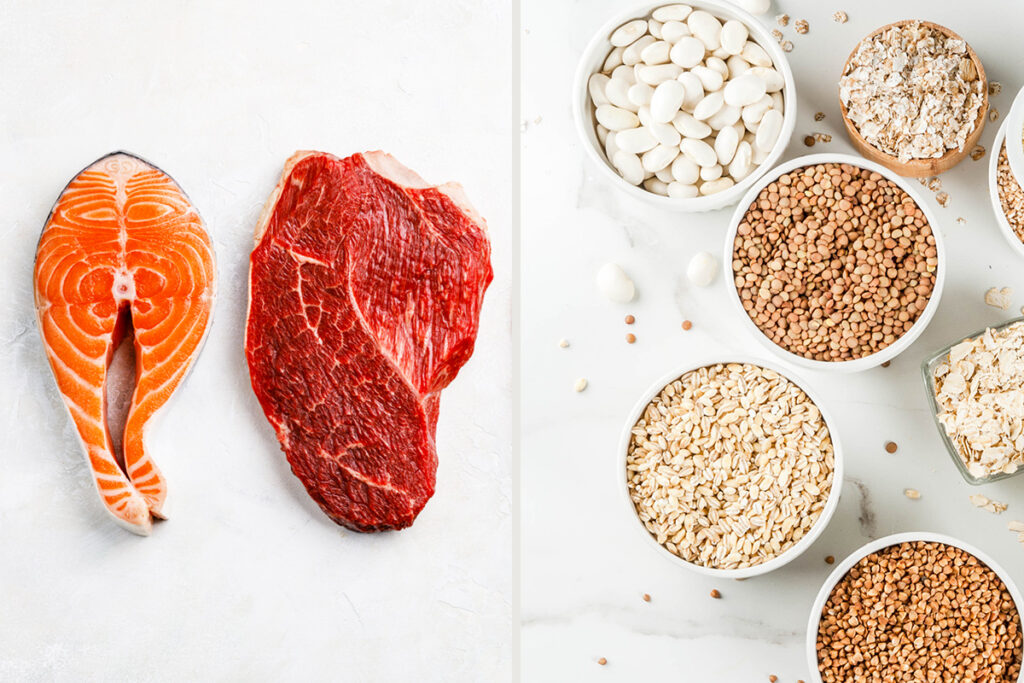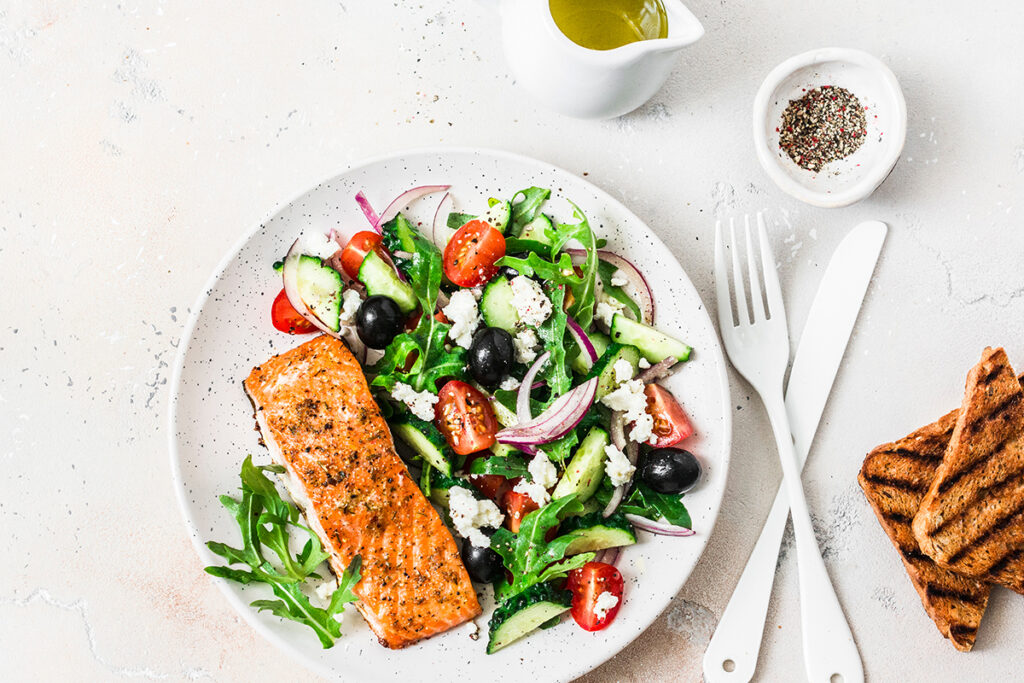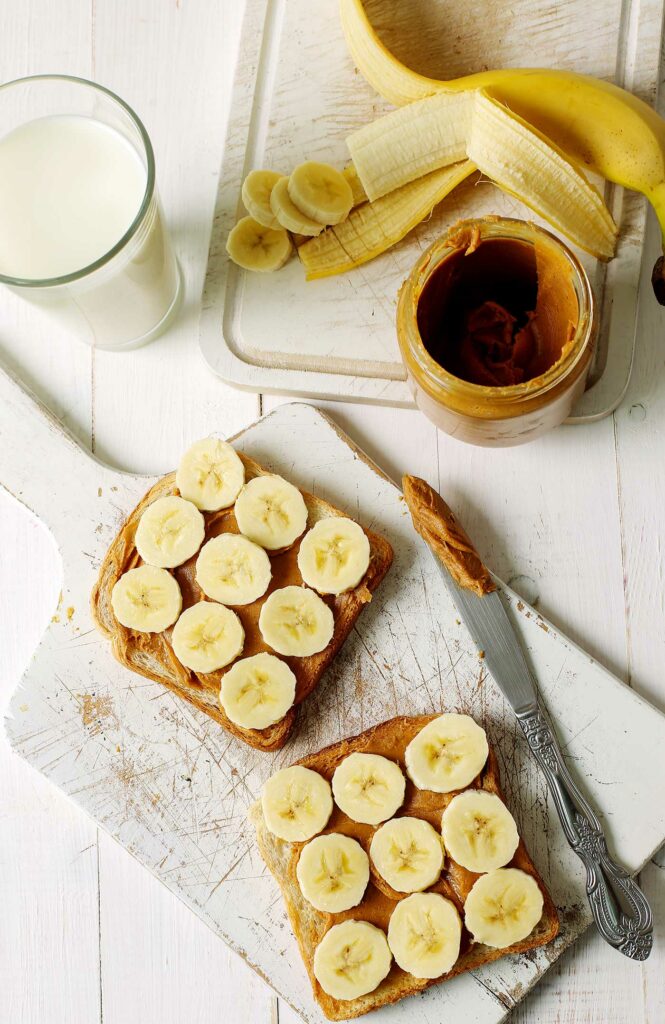Let’s be honest, most of the time you think about weight loss, you’re thinking about how to lose weight fast. If you’re truthful, that means you’re going for the strategy that involves eating the least amount of calories as you possibly can, for as long as possible.
This method of fast weight loss can work, but often backfires with weight re-gain or just not lasting more than a few days on the diet – ergo little weight loss. And by going for this approach, you may be ignoring the advice of pretty much every nutritionist.
How Many Calories
Most expert think it’s best to keep your calorie intake above 1200 calories per day for women and 1800 calories per day for men – it’s healthier, safer, and you’re more likely to get the nutrients your body needs and make the permanent lifestyle changes necessary to maintain your weight loss.1
Consuming less than 800 calories a day is considered to be a very low calorie diet and should only be done with a doctor’s supervision. This type of quick weight loss is only recommended for people who have to lose weight for health reasons. And even then, it’s not advised for longer than 12 weeks.2
The more you cut calories, the more likely it will adversely affect your metabolism. Research suggests that severely reducing calories causes metabolism to slow more than a moderate reduction in calories. This is important because studies show that metabolic rate often does not bounce back to the same level.34 You can determine your calorie requirements using this calorie calculator.
Diet Breaks
Taking breaks from calorie restriction may prevent or reduce the various adaptations the body makes in response to it, including the slow-down in metabolism that generally occurs.
Calorie cycling or calorie shifting may take the form of cycles of 5 days of calorie restriction followed by 2 days normal calorie intake, or longer cycles of four weeks of calorie restriction followed by four weeks of greater calorie consumption.
While more research is needed, some studies suggests this may be better than simply continuously reducing calories. This approach may be also easier to follow and result in greater adherence to longer-term calorie restriction.5678
Cutting calories too much often fails simply because you end up being ravenously hungry and irritable. Not eating at all, only eating sporadically or restricting yourself to specific foods with little nutritional value will break you – sooner not later. Even if you lose weight, you’re unlikely to last long enough for it to be significant, or to make the changes necessary to prevent weight regain.
It also means you’re unlikely to meet your body’s requirements for vitamins, minerals, and other micronutrients, which will adversely affect your health and your body’s weight loss processes.
Drink Smart
When you think about weight loss, the first thing you think about is cutting back on food. But drinks can sabotage a diet so stealthily, you wouldn’t even know when and why things went awry. Drinks for the most part aren’t filling and go down almost unnoticed, but can pack punch when it comes to calorie content.
A can of soda comes is at about 124 to 189 calories. Yes. The calories you just burnt during your workout. Cancelled. And you’re right. That’s not the best way to reward yourself.
What to Drink & What to Avoid
Mini Guide
So here’s how to drink smart.
- Water. It’s easy to confuse hunger and thirst, so make sure you’re drinking enough water. Drinking more water aids weight loss, as it can help increase satiety, prevent sugar cravings, and plays a role in the body’s fat burning process.
- Sweet Drinks. Many drinks are incredibly high in sugar, full of calories but don’t fill you up. In other words, you’re loading up on calories and don’t even have anything to show for it. This includes fruit juices, which, while more nutritious are also high in calories. A 12 ounce serving of apple juice clocks in at 169 to 175 calories. You can juice your vegetables, but you should eat (not drink) your fruit.
- Alcohol. Clearly not good for your health, and also not so great for your waistline. Alcohol is high in calories, and so are the mixers used to make many popular cocktails. In addition, alcohol reduces inhibitions increasing the likelihood that you’ll snack more and disrupts the body’s fat-burning mechanisms.
- Diet soda. With regards to diet soda, yes it’s low in calories, but can you name any of the ingredients on the can? While diet sodas might not be bad for your waist, who knows how good they are for your health?
- Smoothies. Smoothies are filling, nutritious, and (bonus) delicious. True. But if you’re not keeping a very close eye on portion size and the number of ingredients, it can add up to hundreds of calories in no time. If you like smoothies, learn how to make weight loss smoothies that are lower in calories, but still filling, tasty, and nutritious.
- Herbal teas. A great way to have a hot drink that’s also low in calories. Many teas also have health benefits and some may actually help your weight loss efforts a little.
- Infused water (aka detox water). Infusing water with fruits, veggies, and herbs turns plain water into an experience. It transforms the boring into the fresh and flavorful.
- Soup. Filling up with a couple of cups of water before a meal or eating soup can help increase weight loss. According to a study published in the journal Appetite, people who start their meal with vegetable soup consume 20% fewer calories over the course of their entire meal.9
Cut Back on Fat (But Don’t Cut it Out)
Swap your milk, cheese, and yogurt for low fat alternatives. Fat is high in calories. Every 1 gram of fat you eat contains 9 calories, which means it adds up quickly. A couple of weeks after changing to lower fat options, you wont even remember the difference in taste, but you will appreciate the difference to your weight loss efforts.
You can also swap your regular cheeses made from cow’s milk with goat cheese. The calories in cheese are highly variable. Goat cheese tends to contains fewer calories than regular cheese.
Instead of pouring oil into the pan, use spray oil. Each squirt contains 2 to 3 calories, while one table spoon of oil contains 120 calories. That adds up over the course of a year. Making that small change just once a day works out at a saving of thousands of calories a year.
Only Eat Until You Feel Satisfied
During meals don’t aim to feel “full”, eat until you don’t feel hungry, i.e. satiated. The two are not the same. Your stomach is relatively small – merely the size of a fist – meaning you don’t need to eat much to fill it comfortably. And your body can only deal with a limited amount of food at any one time.
The Japanese call this hara hachi bu meaning “eat until you’re 80% full”. It takes the stomach about 20 minutes to send a signal to your brain that you’re full. This approach can help you to slow down and avoid eating to the point where you feel too full.10
Have Protein For Breakfast
Research shows that people who eat eggs for breakfast feel fuller for longer. A study published in the International Journal of Obesity showed that dieters who eat eggs for breakfast lose twice as much weight as those who eat a calorie equivalent breakfast consisting of bagels. You’ll feel fuller for longer than a breakfast with a similar number of calories.11
Include Whole Foods
Go for natural whole foods. If you can’t understand, or pronounce, what’s in your meal, try to avoid it. Start to cut down on fast-foods, ready-made foods and foods with ingredients you’d never find in nature. Basically, go back to basics. You’ll probably not only cut down on calories, but on spending. Instead of a chocolate bar, make your own trail mix – throw together a few raisins and nuts. Or make your own delicious no-bake energy balls.
Whole foods includes fruit, vegetables, legumes, and whole grains too. For example, a study in the Journal of Nutrition found that eating more whole grains might help reduce total body fat and help you lose belly fat. Researchers found that adults who ate about 3 servings of whole grains a day had less body fat and less belly fat fat than participants who ate less than a 1/4 of a serving.12
Whole grains act to aid weight loss by promoting satiety. The fiber in whole grains helps you feel fuller though eating fewer calories. Whole grains are thought to slow digestion or absorption, resulting in lower insulin and glucose levels, which favor the fat burning instead of fat storage.
Whole grain fiber is particularly effective at helping you feel full and may help you feel fuller than eating fiber found in other foods stuffs such as fruit and vegetables. Aim for at least three servings of whole grains daily (one serving equals 1 cup of whole-grain cereal or a slice of whole-wheat bread)
Make a Grocery List and Stick to It
Reduce or avoid bringing high calorie snacks and treats into the house, you’ll always be fighting temptation. Firstly, constantly fighting is tiring. Secondly, you will eventually give in. Thirdly, you’ll feel guilty afterwards and may or may not end up binging or giving up on your weight loss efforts all together.
So make losing weight easier on yourself. If you buy your favorite snacks, stash them away out of sight so you don’t have to see them every time you open the fridge or cupboard. Alternatively, indulge in your favorite treats away from home, such as during a meal out with friends, your local coffee shop, or ice cream parlor.
Don’t Ban Foods
Switch high-calorie sweet treats for more nutritious, lower-calorie versions. Banning certain foods entirely could just make you crave them more.13
When you feel a growing craving, take a mindful approach. Ask yourself whether you are hungry or actually feeling stressed, bored, or upset. If you’re not hungry ask yourself what your need. The solution may be in talking to a friend, taking a walk, or listening to something you like. Learn more about intuitive eating.
Tweak Your Favorite Foods
There is a healthier, lower-calorie alternative to you favorite dish. Yes, it will taste a little different, but it means you don’t have to give it up entirely. Adapting your favorite recipes can save a lot of calories, while still allowing you to enjoy the foods you like.
Adding herbs, spices, and condiments is an important way to make any meal taste great. And just because you’re reducing calories doesn’t mean you should cut down on seasonings. Quite the opposite. You want to boost the flavor and make your lower-calorie meals a delight. In fact many flavor boosters can have a beneficial impact on health and even sometimes on metabolism.
Take Time to Chew
A study published in the American Journal of Clinical Nutrition asked participants to chew one serving of almonds 10, 25 or 40 times. Participants who felt fuller longer, were those who chewed the most.14 Another study found that people with a high BMI tend to chew their food less than people with normal BMI.15
Opt for Healthier Pre-Workout Meal
Research published in the Journal of Nutrition suggests that consuming breakfast consisting of low-glycemic carbohydrates (e.g. oatmeal, muesli or bran cereal), prior to exercising may help you burn more fat. The study showed that fat burning during exercise was higher than when consuming a meal made up of high-glycemic carbohydrates (e.g. cornflakes, white bread, jam).16 Low-Glycemic carbs also sustain energy levels over a longer period of time – perfect to get you through your workout.





Wow! this is really a fantastic list of ways to lose weight fast. Anyone looking to shed those stubborn pounds can read this article, take action, and actually lose the weight. A lot of thought and effort has gone into writing this article. My number one way to maintain my health is through healthy nutrition.
Nice tips,will try them!!!!!!THANK U <3
Awesome tips,will try them!!!!!!THANK U <3
awesome and understoodable tips
Yes, this made sense to me. Several tips that should be helpful to me. Thanks
I really appriciate this. I hope all this actually works now :/